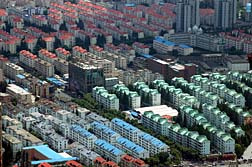In a detailed analysis by the US Food and Drug Administration (FDA), it is reported that most of the deaths were reported over a 3-month window beginning in December of last year, followed by deaths in January and February of this year. There have been no reports of deaths since the end of February, when Baxter initiated the recall. Covidien, which was formerly known as Tyco Healthcare, and B. Braun recalled much of its heparin product as well, as a precaution.
 All three companies recalled product with ties to China, and the same plant used to refine and process crude heparin sourced from the vast, and largely unregulated heparin harvesters in the country.
All three companies recalled product with ties to China, and the same plant used to refine and process crude heparin sourced from the vast, and largely unregulated heparin harvesters in the country.Scientific Protein Laboratories (SPL), a Wisconsin-based enterprise with majority ownership of Changzhuo SPL in China, has been identified as a common denominator in all recalls involving the three heparin manufacturers. SPL has confirmed that its plant served as an unknowing thruway for contaminated heparin—however what is not conclusively known is just where the crude heparin came from. SPL has said in the past that it purchased its crude heparin, fashioned from mucous membrane extracted from the intestines of pigs, from trusted consolidators who could vouch for their own suppliers.
However, there have been reports that mom-and-pop heparin huts, which number into the thousands and constitute a huge, and unregulated cottage industry in China, have sold their wares directly to the consolidators. One heparin worker, toiling in deplorable conditions, told a New York newspaper several weeks ago that she had, on at least one occasion, sold crude heparin directly to Changzhuo SPL.
According to the FDA, which has done its first intensity on the heparin deaths, there were just 3 suspicious deaths reported in 2006. However, heparin reactions began, and the death rate increased over a 14-month period beginning in January of last year. The agency defines suspicious deaths as those involving one or more allergic reactions, or a drop in blood pressure.
What proved confusing was that standard testing revealed no problem with the heparin whatsoever. It wasn't until the FDA implemented a more sophisticated test that the contaminant showed up.
That contaminant was revealed as oversulfated chondroitin sulfate (OCS), a substance derived from fish that is commonly used to treat arthritis, and while similar to actual heparin, OCS is not the real McCoy. There is, thus far, no data to determine just how the counterfeit ingredient reacts in the human body when mixed with real heparin.
That mix, by the way, has ranged from 20 per cent, to as high as 50 per cent of volume. It has also been determined that OCS is much cheaper to produce than real heparin. While it has not been determined just why the counterfeit OCS was used to bolster the volume of the genuine heparin, various theories remain. An outbreak of blue ear pig disease last year throughout many provinces of China severely depleted stock, and drove prices up. As well, the contamination with a counterfeit ingredient smacks of past misdeeds, which include mixing toxic melamine into pet food to mimic protein levels, diethylene glycol (anti-freeze) into toothpaste to mimic the more expensive consumer-grade glycerin, and less-expensive lead paint used in children's toys.
READ MORE LEGAL NEWS
Meantime the FDA has long been criticized for not having the resources to police an ever-expanding import trade of drug manufacturing, supplies and raw materials coming in from foreign shores, particularly China. It was recently reported that it would take decades for the FDA to inspect all foreign drug-manufacturing plants. As it was, it allowed Changzhuo SPL to go ahead with heparin production in 2004 without an inspection by the agency, which is in direct violation of its protocol and policy.
